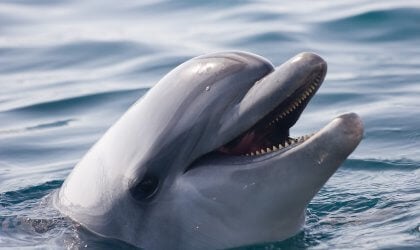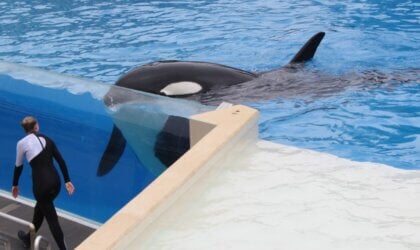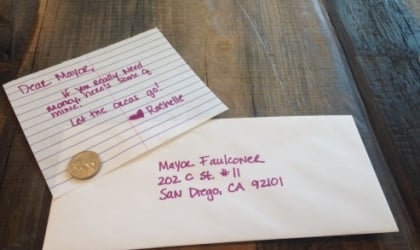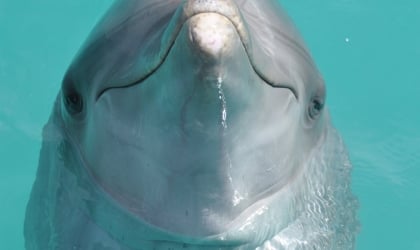Dozens of beluga whales have died at SeaWorld’s cruel abusement parks, including an infant who died just moments after being born in 2017. Seven belugas never even made it past 2 years old. Many of them were born via the company’s sordid breeding program. While in their natural habitat, whales choose their own mates, often performing a kind of dance as part of their courtship ritual—but at SeaWorld, they’re forcibly bred so that the park can exploit their babies for money.
At SeaWorld, these typically social whales are forced into living situations with unfamiliar tankmates, which can lead to conflict. The inability to escape from other frustrated and aggressive animals has likely led to injuries and even deaths. In 2005, a female beluga named Olivia died at 6 years old of a severe head and neck injury probably caused by another frustrated beluga. In all likelihood, this incident would not have occurred in the ocean, where she would have had the opportunity to escape. Another beluga, Nanuq, died in 2015 as a result of an infection that was likely caused when his jaw was fractured during an altercation with two other whales. Before his death, he was used for breeding and removed from the water approximately 42 times so that workers could collect sperm samples. Only four of the 13 babies he fathered are still alive.
Despite many possibly preventable deaths, SeaWorld continues to breed beluga whales and dolphins for profit.
The following 17 beluga whales are still imprisoned at the parks, and they need your help:
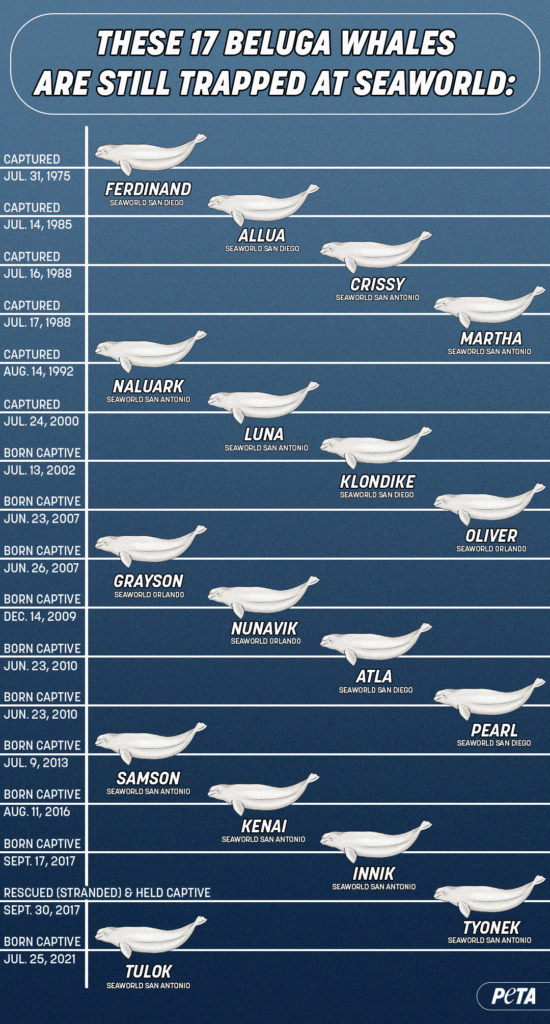
SeaWorld Orlando
Oliver
Currently at SeaWorld Orlando, Oliver was born in a tank in 2007 at SeaWorld San Antonio to Martina and Nanuq. He has never known the feeling of swimming with a pod in the open ocean, and he spends his days in a cramped tank, swimming in circles.
Grayson
Born just days after his half-brother Oliver, Grayson was separated from his family at SeaWorld San Antonio and shipped to two other facilities before being moved yet again, to SeaWorld Orlando. Beluga whales in their natural habitat form communities and develop friendships, but SeaWorld has shuffled them around like game pieces.
Nunavik
Originally born at a different facility in 2009, this 13-year-old male beluga is now held captive at SeaWorld Orlando along with Oliver and Grayson. In nature, he could be swimming with his pod or a chosen community of multiple pods. But at SeaWorld, he’s stuck with two other belugas with whom he didn’t choose to form a community group.
SeaWorld San Antonio
Crissy
In 1988, Crissy was torn from her ocean home in Canada to be put on display at SeaWorld San Antonio, where she’s still being kept today. She is the first-ever beluga forced to give birth after SeaWorld workers artificially inseminated her as well as the first captive beluga to have twins—although one was stillborn. She has given birth to six calves while being held captive at SeaWorld San Antonio, but only one, Innik, is still alive.
Martha
Martha was also sent to SeaWorld San Antonio back in 1988 after being captured in Canada. At the park, she has been repeatedly impregnated as part of the company’s sordid breeding program, starting with her first baby in 1993. Her last pregnancy was in 2015, and like Crissy, she had only one calf, Grayson, who survived—although mother and son were soon separated when he was sent to SeaWorld Orlando.
Naluark
Naluark was only a calf when he was captured in 1992 and sentenced to a life in captivity. In addition to putting him on display, his captors planned to use him in a beluga-breeding program. He has spent most of his 30 years being shipped from place to place like an object because of his ability to sire calves. While being exploited for his sperm, he has fathered nine babies. His latest prison cell is a tank at SeaWorld San Antonio.
Luna
In 2000, Luna was born to Martina and Luke at SeaWorld San Antonio, where she was turned into a breeding machine, giving birth to four calves: Atla, Samson, Kenai, and most recently, Tulok. In nature, beluga whales are extremely devoted mothers, but in the woefully inadequate tanks of SeaWorld, Luna rejected her first-born, Atla, who was conceived by forced insemination with the sperm of Nanuq.
Samson
Born to Luna in 2013, this male beluga has spent his life imprisoned in a concrete cell at SeaWorld San Antonio instead of swimming with a pod in the ocean. He has never felt the tide in the ocean or had depths to explore.
Kenai
The third of Luna’s offspring was born in 2016 at SeaWorld San Antonio, and he continues to be exploited for entertainment, surrounded by concrete walls, along with his brother Samson.
Innik
Innik is the only surviving calf of Crissy. He was born in 2017 and has spent his life at SeaWorld San Antonio, having never known the ocean or freedom.
Tulok
Born in 2021 to Luna and an unknown father, he’s currently the youngest beluga at the abusement parks and has never experienced what it’s like to swim beyond his concrete prison cell.
Tyonek
In 2017, the National Oceanic and Atmospheric Administration found this male beluga as a stranded calf from Cook Inlet, Alaska, belonging to a pod listed under the Endangered Species Act. Six months later, he was sent to SeaWorld, where he remains to this day.
Atla
This 12-year-old female beluga was the result of the forced impregnation of her mother, Luna, using Nanuq’s sperm. She was rejected by her mother, who likely didn’t know how to raise a calf as a result of her captive upbringing.
Pearl
After being rejected by her mother, Ruby, when she was born in 2010, Pearl was raised by another female beluga named Allua at SeaWorld San Diego. She has since been transferred to SeaWorld San Antonio.
SeaWorld San Diego
Ferdinand
This beluga was originally captured in 1975 in Hudson Bay, Canada, to be bred in Germany. He is believed to be around 52 years old, making him the oldest known beluga in captivity. He’s currently stuck in a tiny tank at SeaWorld San Diego.
Allua
Allua was sold to a facility after being captured in 1985 in Hudson Bay, Canada. In 2005, she was transferred on a “long-term breeding loan” to SeaWorld San Diego, where it was discovered that she was infertile. At one point, she acted as a surrogate to a beluga named Pearl, who had been rejected by her biological mother. Female beluga whales in nature have been known to help rear calves who aren’t their own, a behavior called “alloparenting.”
Klondike
Klondike is a male beluga who was born in 2002 at Marineland Canada. In 2006, he was transferred to SeaWorld San Diego, where he sired two calves in 2018. Neither calf survived.
*****
When not torn from their natural habitats or born into breeding programs at places like SeaWorld, beluga whales can explore thousands of miles of ocean every year while traveling with their pods. They’re highly social animals who communicate with one another using a combination of clicks, whistles, and other noises specific to the pod and the individual belugas.
Beluga whales develop strong family bonds and rich friendships and demonstrate emotional complexity. Many of the female beluga whales held captive at SeaWorld parks have endured what no mother should ever have to experience: outliving their own babies. This cycle of mourning will continue as long as SeaWorld pursues its cruel breeding program.
Following hard-hitting PETA campaigns and amid mounting public criticism, SeaWorld ended its infamous orca-breeding program. However, the company chooses to continue generational suffering and grief by breeding other dolphins and beluga whales. We will keep the pressure on SeaWorld until it ends these breeding programs as well.

